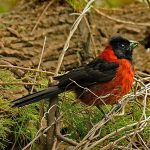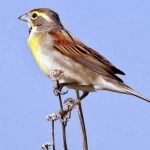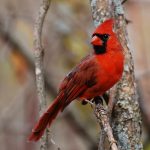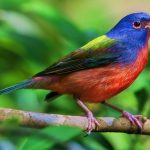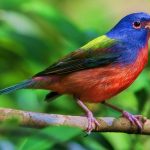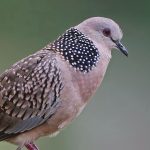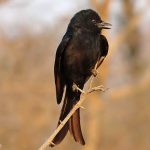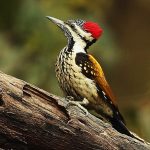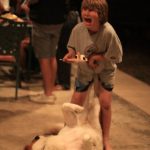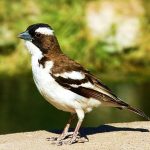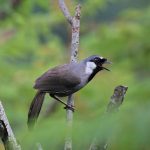Rose-breasted grosbeak
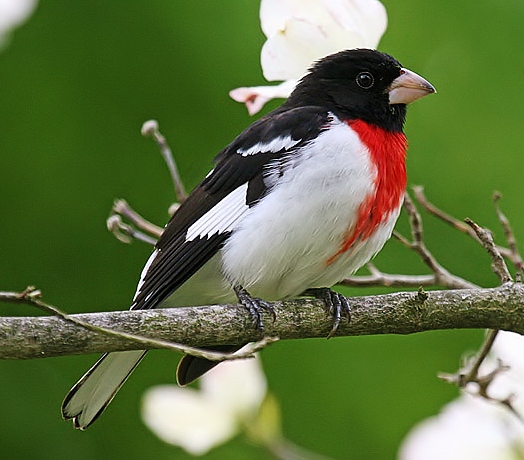
 |
| Photo by John Harrison (Wikipedia) |
Common name:
rose-breasted grosbeak (en); bico-grosso-tricolor (pt); cardinal à poitrine rose (fr); picogrueso degollado (es); rosenbrust-kernknacker (de)
Taxonomy:
Order Passeriformes
Family Cardinalidae
Range:
This species breeds in northern North America, from British Columbia in the west to the Atlantic coast of Canada in the east and as far south as New Jersey, the Appalachian Mountains through South Carolina, west to eastern Kansas, Nebraska, and the Dakotas. They migrate south to winter in the greater Antilles, coastal Mexico, and throughout Central America and northern South America to eastern Peru and the Guyanas.
Size:
These birds are 18-22 cm long and have a wingspan of 29-33 cm. They weigh 35-65 g.
Habitat:
Rose-breasted grosbeaks breed in deciduous and mixed forests in boreal and temperate areas, especially along forest edges, but also in second-growth woodlands, orchards, suburban parks and gardens. They winter in open tropical forests and rural areas.
Diet:
They eat seeds, berries, fruits and insects. They are known to take beetles, ants, bees, bugs and caterpillars, as well as the berries of elderberry, red-berried elder, blackberry, raspberry, mulberry, juneberry, and the seeds of various herbs such as smartweed, pigweed, foxtail, milkweed, sunflower and domestic crops such as peas, corn, oats and wheat.
Breeding:
Rose-breasted grosbeaks form monogamous pairs that last a single breeding season. They breed in May-July and the nest is a cup loosely woven of grasses and twigs, lined with shredded bark, pine needles and fine grasses. The nest is placed on a tree, scrub or vine, up to 17 m above the ground. The female lays 1-5 pale green or blue eggs with reddish brown blotches and speckles. The eggs are incubated for 11-14 days and the chicks fledge 9-12 days after hatching but only become fully independent 3 weeks later. Each pair typically raises a single clutch per year.
Conservation:
IUCN status – LC (Least Concern)
This species has a very large breeding range. The population is considered large and, although there have been marginal declines in some areas, the overall population seems to be mostly stable.
